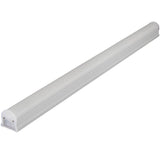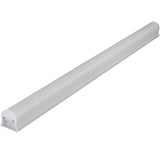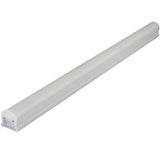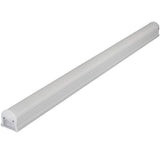The Good, the Bad, and the Ugly of LED Light Long Life
Posted by Dave on for ProLampSales

LED light bulbs, it seems, are like old cowboys, they never die, they only ride off into the sunset.
Exaggeration? Maybe. But it brings up an important point. LED light bulbs do eventually go dark, but the process takes so long it seems like forever.
A Fistful of Rated Hours
So when buying an LED and you see a rated life, what does it mean?
The expected life of most traditional light bulbs is based on an obvious point in time - when the bulb stops producing light, when it "burns out." And for most traditional bulbs, this happens relatively often, and the mechanism is likely to be mechanical failure of the components that make up the lamp.
Even before light bulbs go dark, the amount of light being produced is less at the end of life than when they were new. This process is called "lumen depreciation" and it needs to be part of any discussion about the rated life of a light bulb.
For a Few Lumens More
The light from an incandescent light bulb decreases about 10% to 15% before the filament burns out. Humans don't notice this level of reduced light. We simply wait until the bulb "pop" and fails when we turn it on, about 750 to 2000 hours, to replace it.
Similarly, CFLs produce 80% of their initial lumens when they go dark. This is enough light that, like incandescent, we don’t notice the decline. We replace linear fluorescent tubes and CFLs when they die at around 8,000 to 10,000 hours.
The Good, the LED, and the Ugly
LED bulbs are different. Long before they go dark (around 100,000 hours), the lumen depreciation is very noticeable to humans. This is why the rated life of LEDs is based on "useful light," not complete failure.
LED lumen output normally depreciates to about 30% at between 25,000 and 35,000 hours. This is the threshold of useful light that defines its expected life, even though it will keep producing light for 100,000 hours.
The new age of LED lighting, for all its benefits, has caused a disruption in how we think about light bulbs from purchase to replacement. For traditional light bulbs, the decision to replace is primarily based on when the light bulb fails. Homeowners or lighting maintenance personnel may have a dozen spare bulbs laying around to replace as necessary.
For LEDs, it's not that simple. At around 25,000 hours, the light level from LEDs will become noticeably low to the human eye, but is that when you would know to replace the bulb? Or would you even really identify the problem is that you need a new bulb? After all, it may have been years since the last time you replaced it. Only at this subjective point in time does the LED need to be replaced.
Color temperature shift is another problem, as LED bulbs may become "warmer" as they dim over time. This is why replacing all bulbs in a fixture or area is recommended, to keep the color temperature consistent. This is another LED issue that wasn't really an issue with incandescent or halogen, although fluorescent bulbs could also have inconsistent color temperature as lamps were replaced haphazardly, rather than systematically.
Featured Products (View All)
0 comment




